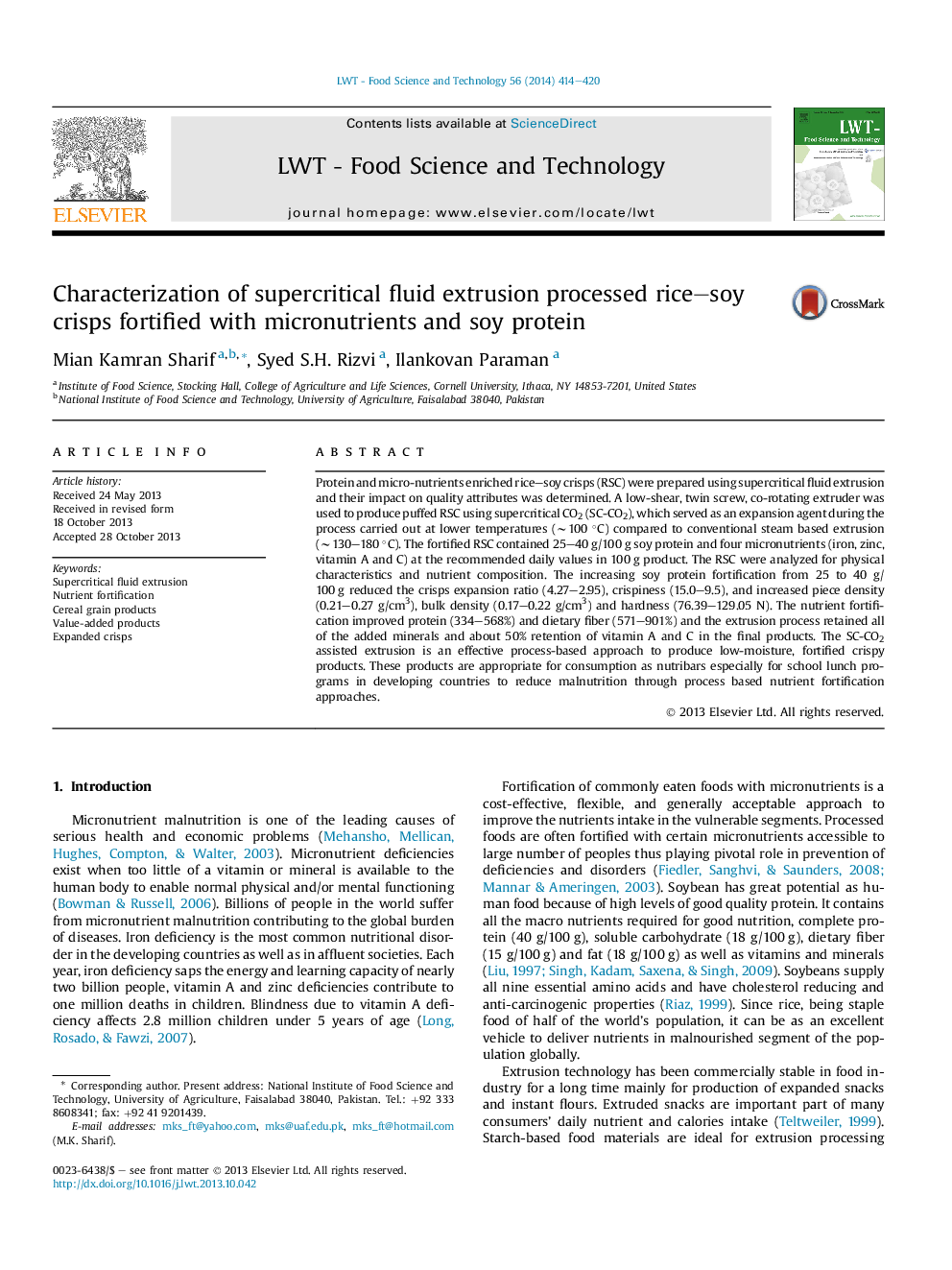| Article ID | Journal | Published Year | Pages | File Type |
|---|---|---|---|---|
| 6404338 | LWT - Food Science and Technology | 2014 | 7 Pages |
â¢Supercritical fluid extrusion is a novel process-based fortification approach.â¢Fortified rice-soy crisps were made from broken rice kernels and soy flour.â¢Nutrient fortification improved 334-568% protein and 571-901% dietary fiber.â¢Extrusion process retained all of the added minerals and 50% vitamins A and C.â¢Fortified rice-soy crisp is appropriate for consumption as nutribars/snacks.
Protein and micro-nutrients enriched rice-soy crisps (RSC) were prepared using supercritical fluid extrusion and their impact on quality attributes was determined. A low-shear, twin screw, co-rotating extruder was used to produce puffed RSC using supercritical CO2 (SC-CO2), which served as an expansion agent during the process carried out at lower temperatures (â¼100 °C) compared to conventional steam based extrusion (â¼130-180 °C). The fortified RSC contained 25-40 g/100 g soy protein and four micronutrients (iron, zinc, vitamin A and C) at the recommended daily values in 100 g product. The RSC were analyzed for physical characteristics and nutrient composition. The increasing soy protein fortification from 25 to 40 g/100 g reduced the crisps expansion ratio (4.27-2.95), crispiness (15.0-9.5), and increased piece density (0.21-0.27 g/cm3), bulk density (0.17-0.22 g/cm3) and hardness (76.39-129.05 N). The nutrient fortification improved protein (334-568%) and dietary fiber (571-901%) and the extrusion process retained all of the added minerals and about 50% retention of vitamin A and C in the final products. The SC-CO2 assisted extrusion is an effective process-based approach to produce low-moisture, fortified crispy products. These products are appropriate for consumption as nutribars especially for school lunch programs in developing countries to reduce malnutrition through process based nutrient fortification approaches.
